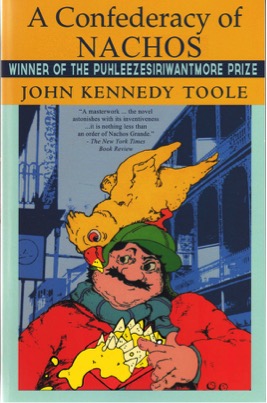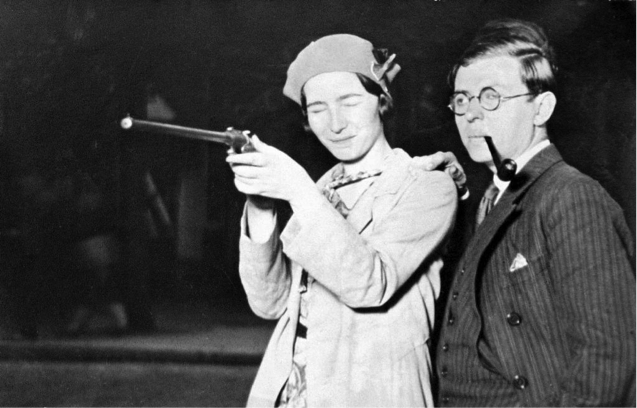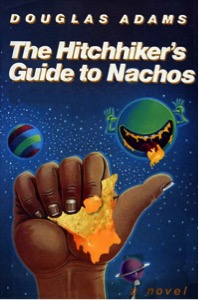
TO AN END:
…11 minutes later I walk out of the office, shaking the test results like a fistful of musty bills I’d won playing Go Fish off Ignatius J. Reilly (or some such literary hero) in a tight, rightful, terrible wager (terrible in that a loss would have been profound—no new disc golf discs off EBay this month, no new flash anthologies [such as this one!], the dog without chow, the kid’s frog [actually a fire-bellied toad {but what is genre?}] without crickets, even cheaper wine, possible shortages in frozen waffles, other such calamities) and I yelled out, “That’s it! That’s it! I will no longer eat walnuts! No walnuts unshelled or shelled! No toasty! No crunch! No easy, natural, toasty crunch! No walnuts, no walnuts, no walnuts! I’ve had it!”
(Note: In writing, you should use approximately three exclamation marks your entire life. Rule broken.)
“But you’re supposed to be eating walnuts,” she says, flatly as a credit card. “They said to add walnuts to your diet. Walnuts are the king of nuts.”
(Actually, that’s almonds…but pick your battles, pick your battles…And anyway her blue eyes are like a ceiling fan: stylish, highly effective, often spinning, with some potential ability to maim.)
I go outside, to the shed, grab a small hatchet and thunk the apple tree repeatedly, with no real effect on the apple tree (the gnarled bastard—it produces thousands of apples a year. Is that good? No. I have to deal with thousands of apples a year, hauling them out in a wheelbarrow [yes, it’s red, Carlos Williams], swatting off yellow jackets, listening all evening to the marsh rats slither up from the creek, across my back lawn, below the apple tree, munching on apples under the moon…How does a man sleep!? But I do digress.), but with real effect on my mood, a slight simmering down of the emotions, this thunking. I replace the hatchet on its handy bent nail, calm and reenter the house.

(Note: In writing, it’s best to balance your creative, mental work with a physical activity. Haruki Murakami enjoys a refreshing jog, for example. Lydia Davis dabbles in archery, an activity as precise as her sentences. Tennessee Williams swam every morning. Simone de Beauvoir liked to shoot rifles with her eyes closed, while Jean Paul Sartre looked on, regally, very much in the pose of a douche bag. O. Henry—in-between crafting his many stories—spent time as a shepherd, ranch hand, cook, baby-sitter, bank embezzler, and drunk. So: physical exercise is significant.)
I’m going back to nachos, I tell her.
Hail Bradley Werner! (A man who makes amazing book covers featuring nachos.)
Hail Prince Fielder!
I tell her. (And when I say, tell, I mean I’m braying like a wildebeest.)
She ignores me, as is her manner.

Feelings bruised, I make a Cuban variation on traditional nachos (dollop of Swiss cheese, one jalapeno per chip, a smattering of black beans). Munch them. Take that last tortilla chip, hold it in the air and light to admire its structural integrity, and scream out, “Let the festivities begin!”
Then I swallow the last nacho chip and place my nacho bowl (carefully, I have a specific rotation of three handmade ceramic bowls of the upmost craftsmanship) in the sink, to rest in its cradle of bubbly bath.
That’s one way to end nachos.
Shall we discuss flash fiction, several finishing moves?
Like with relationships or dinner or spontaneous trips to the casino, some things are easier to begin than to end. Sometimes an idea forms, a flash fiction draft spirals out—click/click/click, your fingers dance like marionettes—and then you realize you’re running out of words, and you need to end. So.
THE CYCLICAL:
As a current Hoosier, I’d like you to recall that Breakfast of Champions opens with Kilgore Trout walking the streets of Midland, and ends with Kilgore Trout walking the streets of Midland. Everything in-between is satirical filler. Let’s examine Four Hard Facts by Damian Dressick, a devastating meditation of grief:
Note how it opens in a bar and ends in a bar. (Also note how appropriate the segmented form [episodic, like memory, like questioning], the use of second person (draws us into the theme), the effective use of objects [steak sauce is powerful here, its banality], the threads [water], but do primarily focus on the ending, cyclical.)
To end, look to the beginning. Check out “How He Felt” by Amelia Gray.
Billboard
Plane/song/sermon
Billboard.
Another flash technique might be what I’d call THE TWIST. Here, the last line is the core significance, a turn, not so unlike a sonnet volta, or O. Henry back in the day, but always remember this is flash, compression—make your turn hard and quick, a slap, a jab (or a legal summons—but I digress again), walking that keen line voiced so well by Flannery O’Connor, “Endings should be simultaneously surprising and inevitable.”
(She also said, “Everywhere I go, I’m asked if I think the universities stifle writers. My opinion is that they don’t stifle enough of them. There’s many a best seller that could have been prevented by a good teacher.” But that’s another blog post altogether…)
See “Dog” by Kyle Minor. (Note repetition, rhythm, couched within the minimalist.)

I once got drunk with Minor at an epic literary cave of a bar in Muncie, IN, and Minor argued for long form literature—Great Expectations and Huckleberry Finn and Pride and Prejudice and whatnot—while I argued for short form, Palm-of-the-Hand Stories and Oh Baby and all those wonderful Latin American microficciones and whatnot and then here I go months later just surfing the hip flash mags for what’s fresh and see Kyle Minor flash fictions popping up the literary web and so I’m assuming mind changed, genre accepted, I’m assuming I won that argument and I so rarely win any argument, you know, I mean you should see my Tuesday mornings, my Sunday evening audio—splish and krunch and hiss and boom!—you should see my, my…what are you saying? What do you mean what am I doing? I’m writing a blog post. You did what? Threw all my books where? On the roof! Why? Are you drunk? Just a minute…Lord, I have to…what!?…Jesus…Yep, my books are on the roof. She threw my books on the roof. My Baudelaire and my Diane Williams, my Ultimate Nachos and my Jayne Anne Phillips [“Good one-page fictions have a spiral construction: the words circle out from a dense, packed core, and the spiral moves through the words, past the boundary of the page,” Phillips says. “Fast, precise, over. The one-page fiction should hang in the air of the mind like an image made of smoke.”], and my, even my sweet and lovely Suttree, even my Douglas Adams…And it’s raining.)
See “Bounty” by Dave Eggers. (Note how one line, the TWIST, transports the piece, from every day to philosophical.)
THE BOUNTY
In her kitchen, she saw many things she would like to eat. On the counter, there was a bunch of new bananas, yellow as a Van Gogh chair, and two apples, pristine. The cabinet was open and she saw a box of crackers, a new box of cereal, a tube of curved chips. She felt overwhelmed, seeing all of the food there, that it was all hers. And there was more in the refrigerator! There were juices, half a melon, a dozen bagels, salmon, a steak, yogurt in a dozen colors. It would take her a week to eat all of this food. She does not deserve this, she thought. It really isn’t fair, she thought. You’re correct, God said, and then struck dead 65,000 Malaysians.
All my favorite techniques, I steal from poets.
(Note: If you seriously want to write flash fictions, seriously steal from poets.)
Example, the FADEOUT, end on the visual, the sensory poem, the image…(I actually took this technique from my childhood in the 1980’s. See there was this channel called MTV and they played something called music videos [I know, I know, this sounds impossible] and these music videos would often end with a FADE OUT, a drifting off image, to fog, to gray, a dissolve, poetry really…)
Night’s thick scent of peach blossoms

And a baseball player, with priorities intact…
(https://youtu.be/7uaMsJztm9I)
Hail Fielder!
Hail nachos!
Hail flash fiction!
Hail stepladders! (Hail stepladders?)
Yes, yes, now please excuse me. As I’ve intimated, things must end, even this blog post. Go eat nachos and please do write something, something flash, all the way to the finish. Me? I need to go get my books.
